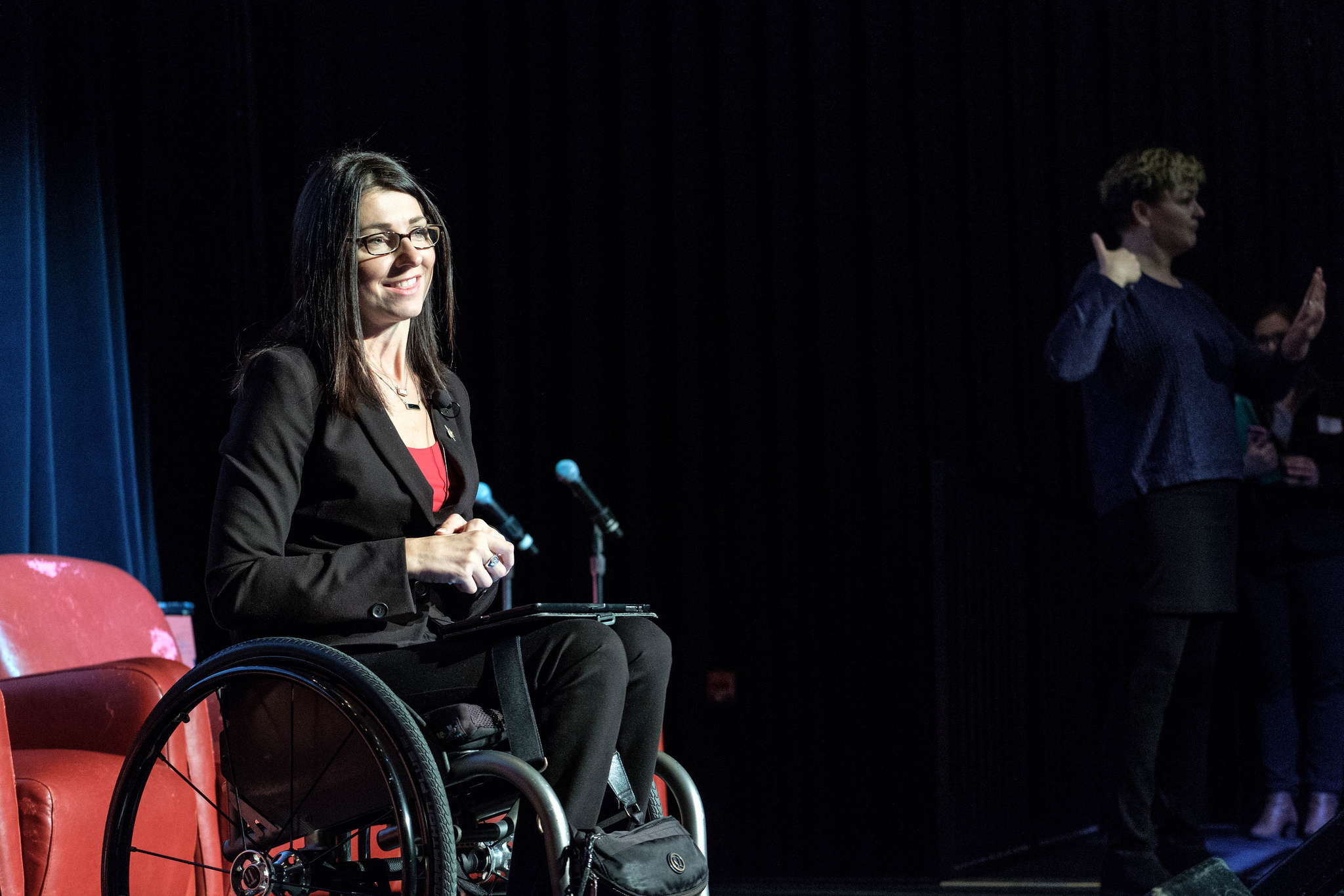Call it a lost decade for tens of thousands of British Columbians.
On April 1, 2007, welfare rates were last increased. Since then, a single person on basic income assistance has received $610 per month for all expenses, including housing. A single parent with one child has received $946 a month.
Each year, inflation has eroded the real value of a welfare cheque. While MLAs receive an automatic annual salary increase, the poorest British Columbians and their families have spent a decade falling farther behind, living on welfare benefits frozen at rates that were inadequate a decade ago.
There were hopes for an increase in this year’s budget, given the surplus and promises the B.C. government would share the benefits after years of belt-tightening.
But the government said no, and offered the lamest of excuses.
In February, Deputy Premier Rich Coleman bafflingly told the legislature “We have to remember that a person on social assistance — a single person on social assistance in British Columbia — gets double the annual income of a person in the Third World.”
Social Development Minister Michelle Stilwell acknowledged life on welfare is hard, but argued that people on assistance are only there temporarily.
And the government pointed to increases in disability assistance in the last two years, and other forms of support for those on welfare, such as job training and increased earnings exemptions.
Coleman’s statement simply shows the callousness of some in government. Are Third World incomes now the standard by which we compare the adequacy of our social safety net?
But Stilwell’s response indicates she either doesn’t understand her ministry’s programs, or is misleading British Columbians.
Reality-check on ‘temporary’ basic assistance
At any given time, about four per cent of British Columbians rely on social assistance — either income assistance or disability assistance.
People deemed employable — about 37 per cent of recipients — get income assistance.
But Stilwell is simply wrong in claiming those 70,000 people — many of whom are children — are only on income assistance “temporarily.”
The government divides income assistance recipients into four categories: those “Expected to Work” (about 47,000 people); those “Temporarily Excused” from work, mainly because they have young children (16,000 people); those classified as “People with Persistent Multiple Barriers” to employment (about 5,000 people); and those with medical conditions that temporarily prevent them from working (about 1,800 people).
All those groups have seen their rates frozen for 10 years.
Stilwell is correct that some people are on income assistance for a short time, although that hardly seems a justification for rates that force them to live in misery and forfeit their dignity.
Most income assistance recipients live in government-mandated poverty for an extended period. The government doesn’t publish the information, but last fall we made special data requests to the ministry and found the facts contradict Stilwell’s claim that people are on income assistance “temporarily.”
The data shows that 27,000 people — almost 40 per cent of income assistance recipients — were on assistance for more than a year. About 19,000 were on assistance for more than two years, trying to survive on decade-old rates.
The ministry’s latest annual report shows that the 47,000 people in the “Expected to Work” (ETW) remain on assistance for a median of 7.5 months. Remember, that’s the median, so while many people receive support for only a few months, many others receive basic assistance for much longer.
And the time on income assistance has been increasing. Back in 2011/12, the median length of time spent on assistance in the ETW category was 5.8 months.
As recipients are sent into deeper poverty by a decade of frozen assistance rates, it becomes harder for them to transition to work. Inadequate rates mean people are sometimes forced into homelessness. Low rates mean people must spend much of their time looking after basic needs, on activities like lining up for free food.
Their incomes mean they can’t use transit, don’t have a phone, Internet, work clothes or any of the basic things needed to find jobs.
When the system grants you only $375 a month for shelter and $235 —about $7.80 a day — for everything else, daily life is focused on survival. (A reality highlighted in the CCPA report Living on Welfare in BC.)
The government seems to believe welfare rates need to be punitively low, or people will stay on assistance longer.
This notion is simply not supported by the evidence. The last notable increase in basic benefits was 2007, when the rate for a single person went from $510 to $610 per month. The “Expected to Work” caseloads did not increase. The caseloads went up modestly in the wake of the recession in 2009 and then came back down.
Reality check on disability assistance
The government points to increases in disability assistance to justify its inaction on income assistance rates. And it’s true, after having rates frozen for eight years between 2008 and 2015 (during which time the real value of a disability welfare income fell by $1,218 a year), those on disability assistance saw paltry increases in 2016 and $50 a month in 2017.
But the new rates still leave the 120,000 people on disability assistance and their children 35 per cent below the poverty line. And the increased rates are, in real dollars, well below the income for people with disabilities in the mid-1990s, and lower than assistance in Ontario, Saskatchewan and Alberta.
The total annual income of $12,940 for a person unable to work due to disabilities is a disgrace. Yet it represents the income our government, acting on our behalf, deems acceptable for people to live on. We are failing the most vulnerable among us with a disability benefit so low that, in all likelihood, recipients rely on food banks and other charities to make ends meet.
Reality check on earnings exemptions and single-parent supports
The B.C. government eliminated earnings exemptions in 2002. People on assistance were no longer allowed to keep any extra money they managed to earn. Then, to its credit, in recent years, the government restored earnings exemptions and enhanced them.
But most people on welfare don’t use them.
We asked the ministry how many “Expected to Work” income assistance clients were reporting additional income in 2015. Only 11 per cent. For disability assistance the rate rose to 21 per cent.
Most people on social assistance can’t get paid work, at least with existing supports. Practically speaking, this policy does not represent an actual income supplement for most people on social assistance.
The government has recently instituted some positive programs for single parents. It partially waived the ridiculous rule prohibiting social assistance recipients from taking post-secondary courses (although only for single parents). Single parents now have access to additional child care, transit and employment/training supports.
But while the government has been keen to highlight this new initiative, only 4,500 people have accessed the program. Only 833 single parents have found employment since it started in September 2015 — about 50 a month.
These changes for single parents are welcome. However they prove the point that the welfare system’s overall rules and rates don’t facilitate the path to employment. If these programs for single parents are worthwhile, why not extend them to all welfare recipients?
No more excuses not to raise the rates
The government’s stubborn resistance to raising welfare rates is an affront to human dignity, and it needs to end.
That we have a welfare system that is dependent on food banks and charities for people to meet their basic needs impugns us all. We are failing to meet a moral obligation to one another.
That we have rates so inadequate that many women feel compelled to remain in or return to abusive relationships is a condemnation of us all.
In a society as wealthy as ours, there is no excuse not to raise rates.
The government has room in its budget to act now. It could immediately raise rates by $200 to $400 a month (depending on family size), and the total cost of about $400 million could be covered by the current surplus. Then going forward we should establish an independent commission to determine what rates should be and move quickly to enact these recommendations. ![]()
Read more: BC Election 2017, BC Politics


















Tyee Commenting Guidelines
Comments that violate guidelines risk being deleted, and violations may result in a temporary or permanent user ban. Maintain the spirit of good conversation to stay in the discussion.
*Please note The Tyee is not a forum for spreading misinformation about COVID-19, denying its existence or minimizing its risk to public health.
Do:
Do not: